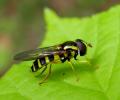| ||||||||||||||||
 |
||
|
||
 Users Online
Forum Threads
Newest Threads
· Unknown Stratiomyida...· Milichiidae?->Chloro... · Heleomyzidae ? · Ceratopogonidae (Ton... · Bibionidae: Bibio re... Hottest Threads
No Threads created
Theme Switcher
Last Seen Users
Latest Photo Additions
|
More Information about: synonymy
Comments
Post Comment
Please Login to Post a Comment.
| Date and time
Login
Temporary email?
Due to fact this site has functionality making use of your email address, any registration using a temporary email address will be rejected.
Paul Donate
Latest Articles
· Voltinism in Chaoborus
· Vitaliy Nikolaevich ... · Mating behaviour and... · Oviposition into the... · African Invertebrates Syrph the Net
License Agreement - Click to Download Public files of Syrph the Net can be downloaded HERE Last updated: 25.08.2011 Shoutbox
You must login to post a message. 17.08.23 15:23 Aneomochtherus
17.08.23 13:54 Tony, I HAD a blank in the file name. Sorry!
17.08.23 13:44 Tony, thanks! I tried it (see "Cylindromyia"
 but don't see the image in the post. but don't see the image in the post.17.08.23 11:37 pjt - just send the post and attached image. Do not preview thread, as this will lose the link to the image,
16.08.23 08:37 Tried to attach an image to a forum post. jpg, 32kB, 72dpi, no blanks, ... File name is correctly displayed, but when I click "Preview Thread" it just vanishes. Help!
23.02.23 21:29 Has anyone used the Leica DM500, any comments.
27.12.22 21:10 Thanks, Jan Willem! Much appreciated.
 19.12.22 11:33 Thanks Paul for your work on keeping this forum available!
Just made a donation via PayPal.
09.10.22 17:07 Yes, dipterologists from far abroad, please buy your copy at veldshop.
Stamps will be expensive, but he, the book is unreasonably cheap
 07.10.22 11:55 Can any1 help out with a pdf copy of
1941 Hammer. Vidensk. Meddel. Dansk Naturhist. Foren. 105;
thank you
|
|
images in Diptera Gallery and Forum of their respective owners Powered by PHP-Fusion copyright © 2002 - 2025 by Nick Jones. Released as free software without warranties under GNU Affero GPL v3. SimpleAsThat |
||
| Render time: 0.22 seconds | 200,257,506 unique visits | ||










![header=[synonym] body=[Name used for a taxon that also is known under another name.<br />
Links: http://en.wikipedia.org/wiki/Synonym_(zoology)<br /><img src='../../infusions//terms/images/no_image.gif' style='vertical-align:middle;' />] delay=[0] fade=[on]](../../infusions/terms/images/help.gif)
True synonymy is where one author has described a species unaware that this has already been done or believing his biological species to be different (a view not shared by the author of the synonymy). The first situation is very common with authors of the nineteenth century when a rush to describe species coincided with wars and revolutions which impeded travel and delayed book delivery. Nationalism and language difficulties were other problems. The second, called 'splitting' common in certain groups (the Lepidoptera, for instance) in the past is prevalent today. Unfortunately the inclusion of the authors name as part of the name has encouraged glory seekers.
Misidentifications are also included in synonymies. This is unfortunate since the two are not really the same. Here a later author has misunderstood a previous author's diagnosis and therefore misapplied the previous author's name. The error, if the later author produced an excellent and therefore popular book, particularly one with a much better description of the biological species in question, is often perpetuated though sometimes only in one country.
Synonymies are often spuriously impressive with lots of Latin and book titles. However , asked to explain the situation the author is at a loss and many situations are simply guesswork. Beware of those where the author of the synomym decision is not given.